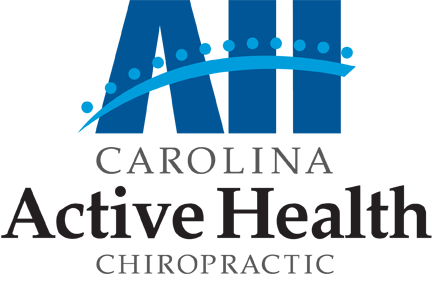Spinal Disc Injury
What is a disc?
A disc, or more specifically an intervertebral disc, is a cartilaginous-based structure that lives between the vertebrae of the spinal column. Intervertebral discs (IVDs) have several purposes, including shock/weight distribution, stability, and motion. IVDs are composed of two main anatomical parts; the annulus fibrosus and the nucleus pulposus. The annulus fibrosus makes up the outer layers of the disc and is largely made of sturdy collagen fibers. The nucleus pulposus makes up the inner portion of the disc and is a more complex fluid-like substance.
What causes disc injury?
Mechanisms for IVD injury vary greatly. Many individuals often associate a “lift and twist” motion to be a prominent cause of disc injury. However, IVDs can be damaged in numerous motions or activities. Often, intervertebral disc injury is caused by a multitude of factors and stressors over time.
What are the types of disc injury?
Several types of disc pathology exist, and numerous types of nomenclature are used to describe them. Some of the more common named disc injuries are as follows:
Disc bulge – a broad region of annulus fibrosus tissue extends beyond the margins of the adjacent vertebrae (>90 degrees of total circumference)
Disc herniation:
Protrusion – focal projection of annulus fibrosus tissue extends beyond the margins of the adjacent vertebrae (<90 degrees total circumference)
Extrusion – projection of nucleus pulposus material through an annular defect; remaining within confines of the normal disc circumference
Sequestration (rupture) – relocation of extruded disc material away from the normal boundaries of the disc
Disc desiccation – dehydration of the nucleus pulposus, causing a loss in disc height (normal degeneration)
How are disc injuries diagnosed?
Intervertebral disc injuries are diagnosed through several methods including a medical history, neurological examination, mechanical/orthopedic testing, magnetic resonance imaging (MRI), and computerized tomography (CT). In the absence of hard neurologic signs, often disc pathology can be diagnosed without the use of advanced imaging.
How are disc injuries treated?
Treatments employed for IVD injury are based upon the findings discerned from an appropriate exam and possible advanced imaging. Many disc injuries can be treated without the need for surgical intervention or invasive treatment strategies. Conservative management can include active/passive mobilizations, chiropractic adjustments, neurodynamic movements, soft tissue techniques, and postural education.
Your body’s balance is based on the proper functioning of the spine, so you can imagine the importance of enabling the spine to work at its fullest, most valuable capacity. When the spine is compromised, other parts of the body are as well. These problems can cause pain and lead to more significant issues.
A chiropractor has the tools and knowledge to alleviate your back pain through spinal adjustments or manipulations, these adjustments return the spine to its natural state, thereby alleviating the pain. Usually, the pain is due to compressed nerves or problems with your discs. The doctors at Carolina Active Health Chiropractic will give you back your mobility and relieve you of your back discomfort- naturally.
We recommend visiting our office as soon as possible if you are suffering from any of the following symptoms:
Intense back pain
Sciatica pain
Chronic lower back pain
Pain starting in your back and radiating to your legs
Weakness, tingling, or numbness in back
Loss of range of motion in back
Swelling of affected areas of the back
The underlying cause may be serious and require chiropractic attention:
Bulging disc
Sprain / strain
Disc herniation
Perpetual back pain is a sign that help is necessary. Both Drs. Nelson and Dr. Yates can help you manage the pain and work to effectively treat the problem at its core. Spinal manipulation is a safe and reliable way to encourage your spine’s health and increase your mobilization.
When to Visit a Chiropractor for Your Back Pain and Our Process
If you are currently experiencing any level of back pain or using pain medication to manage your back pain, it’s a great time to give our Carolina Active Health Chiropractic team a call. We understand that suffering from pain is more than a hindrance on quality of life, but it can lead to serious health problems.
Give us a call to set up your appointment. On your initial visit we will take a brief assessment of your medical history and discuss your current pain points. We will provide an examination to determine what’s causing your pain and how best to move forward with a treatment plan you feel confident in.
Visiting our Greenville chiropractic office is the first step to your safe, natural healing process.
“Dr. Nelson and his team are phenomenal. With his background in sports medicine, Dr. Nelson blends together chiropractic care with physical therapy and other treatments for a wholistic treatment plan that really delivers. I went in last summer with extreme pain when standing/walking due to a herniated disk, and I was virtually pain free within a few months due in large part to this team (I did receive a couple outside treatments, but this was a huge part of my recovery). I have had bad experiences with Chiropractors in the past, but I would recommend Carolina Active Health Chiropractic without hesitation.”
“Sciatica pain relief after first visit. Called for an appointment as a new patient got in same day. They’re amazing! Like another patient I found CAHC online. I don’t regret my choice. Highly recommend!!”
“Knowledgeable, knowledgeable knowledgeable!!! I am a physician and have nothing but praise! They have their act together!!!”


